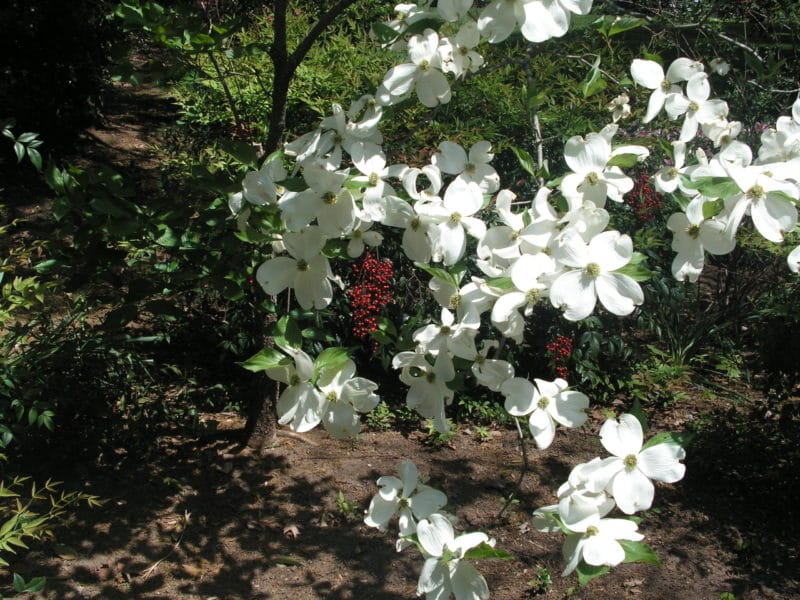GREEN AND GROWING
Spring is Here!

Spring is here. The weather, the flowers, the birds, and above all, the itchy feeling in the palms of gardeners’ hands tells us so, regardless of the date of the equinox or last frost. This winter’s persistent rain has forced most gardeners to sit on their hands indoors, but now its time to get outside and dig. Many tasks have been delayed past their optimal date, so there is no time to lose.
What should the gardener or home landscaper do first? Stop. Slow down. Smell the flowers that are already blooming. If we can’t enjoy our plants, what is the point of our toil? We are in the last stages of bloom for Japanese camellias, Daffodils, Sweet breath of spring, Flowering quince and Border forsythia. But Saucer and Star magnolias, Periwinkle, Thrift, and Hyacinth are in full bloom. Cherry trees have largely faded, but Redbud and Lorapetalum are just opening up. Dogwoods will follow the Redbud by about two weeks. The azalea explosion is yet to come.
Now, get to work. If you have not completed your winter pruning, do it now, before spring growth begins. You would have wanted to winter prune any shrub that blooms after the first of June. Flowering plants that bloom in the spring, however, should not be pruned until after their bloom. For example, you can bloom Japanese camellias now, because they have already bloomed. You can prune the Lorapetalum as soon as it finishes. A Crape myrtle will not bloom until June and only on wood that grows this spring, so you can prune it now if you move quickly. (Please don’t top it in the practice known as “crape murder.”) But you would not prune a fall-blooming Sasanqua camellia now, since to do so would cut off the bloom bud that formed this winter. That should have been done in the winter.
Vegetable gardeners should prepare their soil by working in organic material and applying lime and fertilizer, as recommended by the soil test results obtained from North Carolina State’s Soil Testing Section. (You did get a soil test, didn’t you?) Now is the time to plant seeds for beets, carrots, radishes (a favorite for children), lettuce, kale, spinach, and Swiss chard—really all the tubers, roots, and leafy vegetables. Fruiting vegetables such as tomatoes, okra, peppers, and eggplants are usually planted as transplants and must wait, not only for the danger of frost to pass, but for the soil to warm up to 70 degrees. That time is usually after May first. Plant your bean seeds in between the dates for leafy vegetables and fruiting vegetables.
Lawn services are busy spreading fertilizer and preemergent herbicide to control crabgrass. You should be doing so too. If you prefer not to distribute manufactured chemicals on your lawn, try corn meal gluten, which is somewhat effective as a preemergent if applied right now and again in six weeks and is, certainly, a good fertilizer. Again, a soil test is critical to the effective use of any fertilizer.
Next? Stop. Slow down. Smell the flowers. Don’t miss April, Davidson’s most glorious month in the flowering season.
Tom Watson
Tom Watson is a Volunteer Extension Master Gardener in Mecklenburg County. He has also received a Certificate in Native Plants from UNC-C and a Certificate in Horticulture Technology--Residential Landscape Design from CPCC. He and his wife, Sue Bartlett, own The Cedars Davidson Bed & Breakfast.


